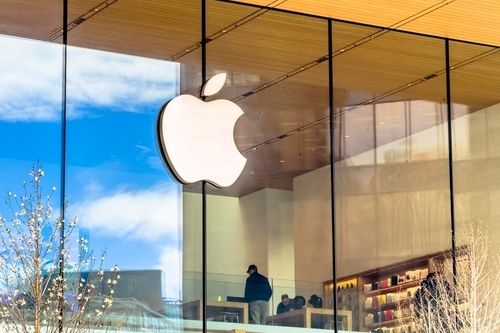
Nike (NYSE: NKE) and Apple (NASDAQ: AAPL) are often considered stable blue chip stocks for conservative investors. They're two of the most iconic American brands, they have plenty of pricing power, and they lead their respective markets.
But over the past three years, Nike's stock price was cut in half as Apple's stock price rallied over 30%. Let's see why the tech giant outperformed the athletic footwear and apparel maker by such a wide margin -- and if it's still the better buy right now.

Image source: Getty Images.
Why did Nike's stock plunge?
Nike's revenue rose 5% in fiscal 2022 (which ended in May 2022) and 10% in fiscal 2023. But in fiscal 2024, its revenue growth flatlined.
Nike Direct, its direct-to-consumer business that handles its e-commerce sales and brick-and-mortar stores, only grew its revenue by 1% for the year as its soft digital sales largely offset the stronger growth of its physical stores. The weakness of its North American business also erased its stronger sales in China and other overseas markets.
The pressure worsened in the first half of fiscal 2025, as Nike Direct's sales plunged by double digits and its total revenue dropped 9% year over year. For the full year, analysts expect Nike's revenue and adjusted EPS to decline 10% and 48%, respectively.
Nike plans to break out of its rut by rebuilding its relationships with wholesale retailers to dilute its dependence on Nike Direct's online business, selling a higher mix of premium full-price products to offset its markdowns and ramping up its spending on new products and marketing campaigns. But those strategies might not meaningfully boost its profits unless its revenue growth stabilizes again -- and that could be tough to achieve as another tariff war erupts between the U.S. and China.
Nike's business could warm up again in fiscal 2026 if those headwinds dissipate, but its stock still doesn't look like a bargain at 29 times forward earnings. Its forward dividend yield of 2.1% also won't attract any serious income investors.
Why did Apple's stock rally?
Apple still generates over half of its revenue from the iPhone, so its growth generally ebbs and flows with the broader smartphone market. To offset its dependence on the iPhone, Apple expanded its services ecosystem -- which now hosts over 1 billion paid subscriptions through its sticky services like Apple Music, Apple TV+, and iCloud.
Apple's revenue grew 8% in fiscal 2022 (which ended in September 2022), but it fell 3% in fiscal 2023 as soft sales of iPhones, Macs, and iPads offset its rising services revenue. In fiscal 2024, its revenue increased 2% as its iPhone sales grew again. For fiscal 2025, analysts expect Apple's revenue to grow 5% and 9%, respectively, even as its hardware business faces tariff headwinds, its services business deals with antitrust challenges, and it struggles to launch new hit hardware devices.
But despite all of those challenges, Apple is still a money-making machine, which ended its latest quarter with $141 billion in cash and marketable securities. That war chest gives it plenty of room for its future investments, acquisitions, buybacks, and dividends while making it a safe-haven play in a wobbly market. It also believes the expansion of its generative AI services will strengthen its walled garden and lock in more customers.
Apple's stock isn't cheap at 31 times forward earnings, and its forward dividend yield of 0.4% is barely worth mentioning. That said, it doesn't face as many existential challenges as Nike, even though both companies could be squeezed by higher tariffs.
The better buy: Apple
It might be tempting to buy Nike's stock after its steep drawdown, but it faces too many pressing issues. Apple's stock won't skyrocket anytime soon, but it should continue to generate bigger gains than Nike for at least the next few quarters.
* The content presented above, whether from a third party or not, is considered as general advice only. This article should not be construed as containing investment advice, investment recommendations, an offer of or solicitation for any transactions in financial instruments.

